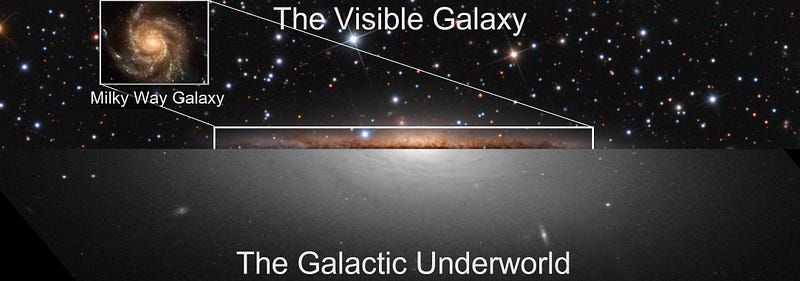Exploring the Galactic Underworld: Mapping Our Stellar Graveyard
Written on
Chapter 1: The Galactic Underworld
Recent advancements in astronomy have unveiled a remarkable new perspective of our galaxy. Researchers from the University of Sydney, in collaboration with Monash University, have successfully created the first comprehensive map of the Milky Way’s stellar graveyard. This "galactic underworld" delineates the remnants of once-mighty stars that have transformed into black holes and neutron stars. The discovery highlights not only the vastness of the universe but also enhances our understanding of its intricate workings.
This innovative mapping reveals a stellar graveyard that extends three times the height of the Milky Way itself, providing an estimate of where these ancient dead stars are located. Significantly, nearly 30% of these stellar remnants have been expelled from the galaxy entirely. This raises intriguing questions about the fate of these corpses: do they have a specific location, or have they drifted aimlessly through the vastness of interstellar space?

The researchers focused on neutron stars, which arise from stars eight times larger than our sun, and black holes, the remnants of stars originally 25 times more massive than our sun. Their findings have profound implications for our understanding of stellar evolution.
“I regularly work with images of the visible Milky Way, and I anticipated that the galactic underworld would show subtle variations. I never expected such a dramatic transformation in its structure,” notes Dr. Sanjib Sharma, one of the researchers involved.
Section 1.1: Charting Stellar Remnants
To construct this detailed map, astronomers began by modeling the full lifecycle of these ancient stars. A significant challenge was identifying where to look, particularly for the oldest stars that have undergone substantial changes over billions of years. In contrast, locating newly formed stellar corpses was somewhat easier, as they align more closely with the current configuration of the galaxy.

Determining the trajectory of these dead stars was another major hurdle. Asymmetric supernova explosions propel remnants in unpredictable directions at extremely high velocities. It was crucial not only to discover their initial paths post-explosion but also to trace their movements over billions of years to understand their ultimate destinations.
Subsection 1.1.1: Complex Modeling Techniques
The researchers employed intricate modeling techniques to analyze where the stars were born, the nature of their explosive endings, and their subsequent dispersal as the galaxy evolved. Contrary to their expectations of the galactic underworld being similar to the visible Milky Way, the team found it to be strikingly different.

The maps generated reveal that the characteristic spiral arms of the Milky Way are absent in the galactic underworld. This observation points to the age of the remnants, with energetic kicks from supernovae resulting in a blurring effect. Additionally, the side view of the galactic underworld showcases a puffiness that results from kinetic energy injected by supernova explosions, elevating them into a halo surrounding the visible galaxy.
Section 1.2: Stellar Corpses in Intergalactic Space
As previously mentioned, approximately 30% of neutron stars have been ejected into intergalactic space, potentially passing through our cosmic neighborhood, just 65 light years away. With an enhanced understanding of the locations of these stellar remnants, astronomers are poised to leverage advanced technologies to unravel the mysteries surrounding the galactic underworld.
Chapter 2: Visual Insights into the Milky Way
The first video showcases the first-ever neutrino map of the Milky Way, unveiling major surprises about the galaxy's structure and its hidden aspects.
The second video presents a breathtaking galactic map of the Milky Way, illustrating its vastness and the new understanding of its dimensions, stretching 40,000 light years across.